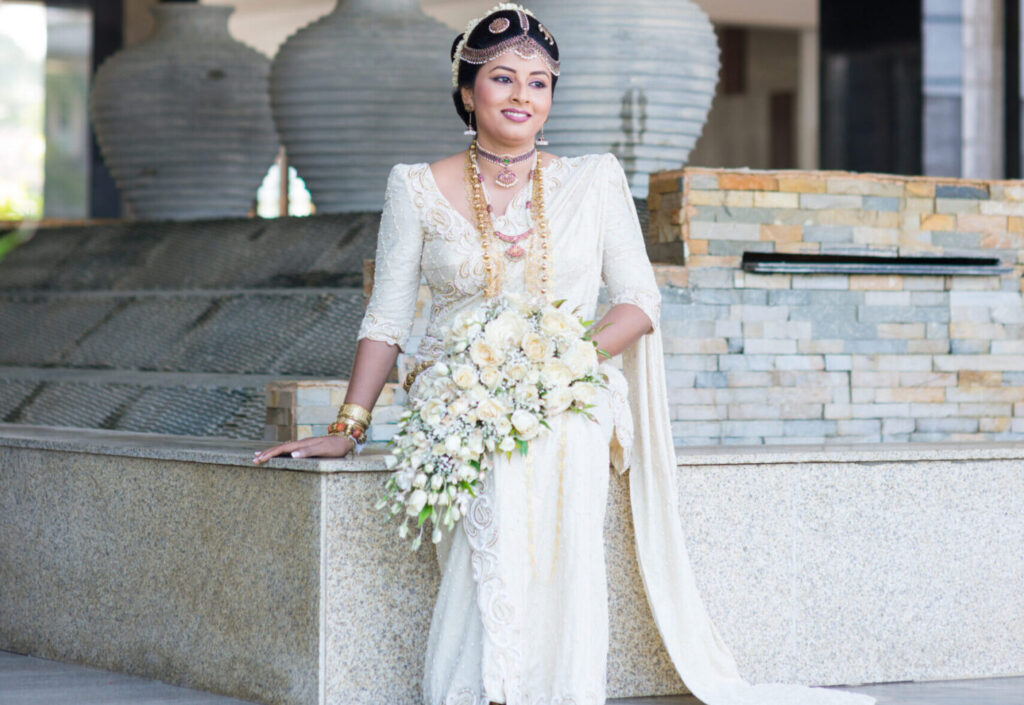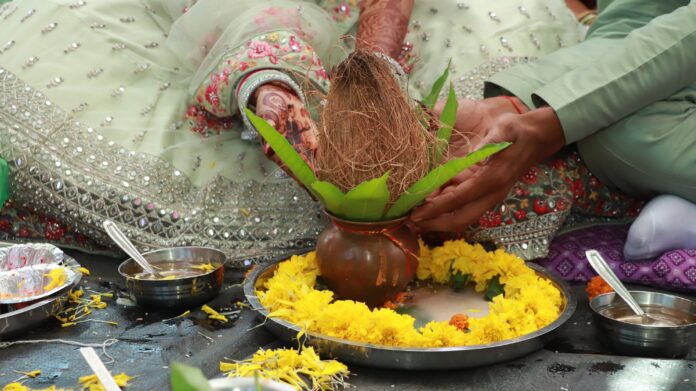By The Frontpage Journal
Weddings in Sri Lanka are vibrant celebrations where centuries-old traditions meet contemporary expressions of love. These ceremonies offer a window into the island’s rich cultural tapestry, blending intricate rituals, symbolic attire, and evolving social roles. From the gleam of gold jewelry to the heartfelt vows exchanged today, Sri Lankan weddings reflect both heritage and change.
At the heart of many Sri Lankan weddings is a deep respect for family and community. Ceremonies often extend beyond the couple, involving extended relatives and friends in a shared experience that honors ancestry and social bonds. Whether in Sinhala, Tamil, Muslim, or Christian traditions, weddings are marked by elaborate preparations, festive gatherings, and sacred rites designed to bless the union and ensure harmony.
Gold holds a special place in these celebrations. For centuries, it has symbolized prosperity, purity, and status. Brides commonly wear ornate gold jewelry—necklaces, bangles, earrings, and intricately designed headpieces—that often carry family heirloom significance. The gleam of gold is not merely decorative but a statement of cultural identity and continuity. Grooms, too, may don gold accessories, complementing traditional attire like the National Dress or Sherwani, depending on community customs.
The attire worn by couples reflects regional diversity and evolving styles. Sinhala brides often choose the richly embroidered osariya, a form of the saree, while Tamil brides favor the bright silk saree in vibrant colors. Christian weddings may feature Western-style gowns alongside local touches. Increasingly, modern couples are blending traditional garments with contemporary fashion elements, reflecting personal tastes and global influences.

Ceremonial rituals are layered with symbolism. From the exchanging of floral garlands to the lighting of oil lamps, each act carries meaning—invoking blessings, unity, and the merging of families. Traditional music, dance, and poetry add to the spiritual and cultural atmosphere, while feasts showcase the island’s culinary diversity.
Gender roles within wedding culture are also evolving. While many rituals still emphasize traditional roles and family expectations, younger generations are redefining partnerships with greater emphasis on equality and shared decision-making. This shift is reflected in pre-wedding preparations, ceremony planning, and even public expressions of commitment. Couples today often incorporate their personal stories, values, and aspirations into the wedding narrative, balancing respect for tradition with modern love.
The economic aspect of weddings is significant, as these events often represent major investments and social statements. Wedding planners, designers, jewelers, and caterers form a vibrant industry that supports livelihoods and innovation. Yet there is a growing awareness around sustainability and mindful spending, encouraging simpler, more intimate ceremonies that focus on meaning over extravagance.
For foreign readers, Sri Lankan weddings offer a fascinating glimpse into a culture where the past and present dance together. They reveal how ritual and romance coexist, how symbols of wealth and spirituality intermingle, and how families and individuals navigate change with grace.
In the blend of gold traditions and modern love stories, Sri Lankan weddings celebrate not only the union of two people but the ongoing story of a nation—one that honors its roots while embracing new chapters.




